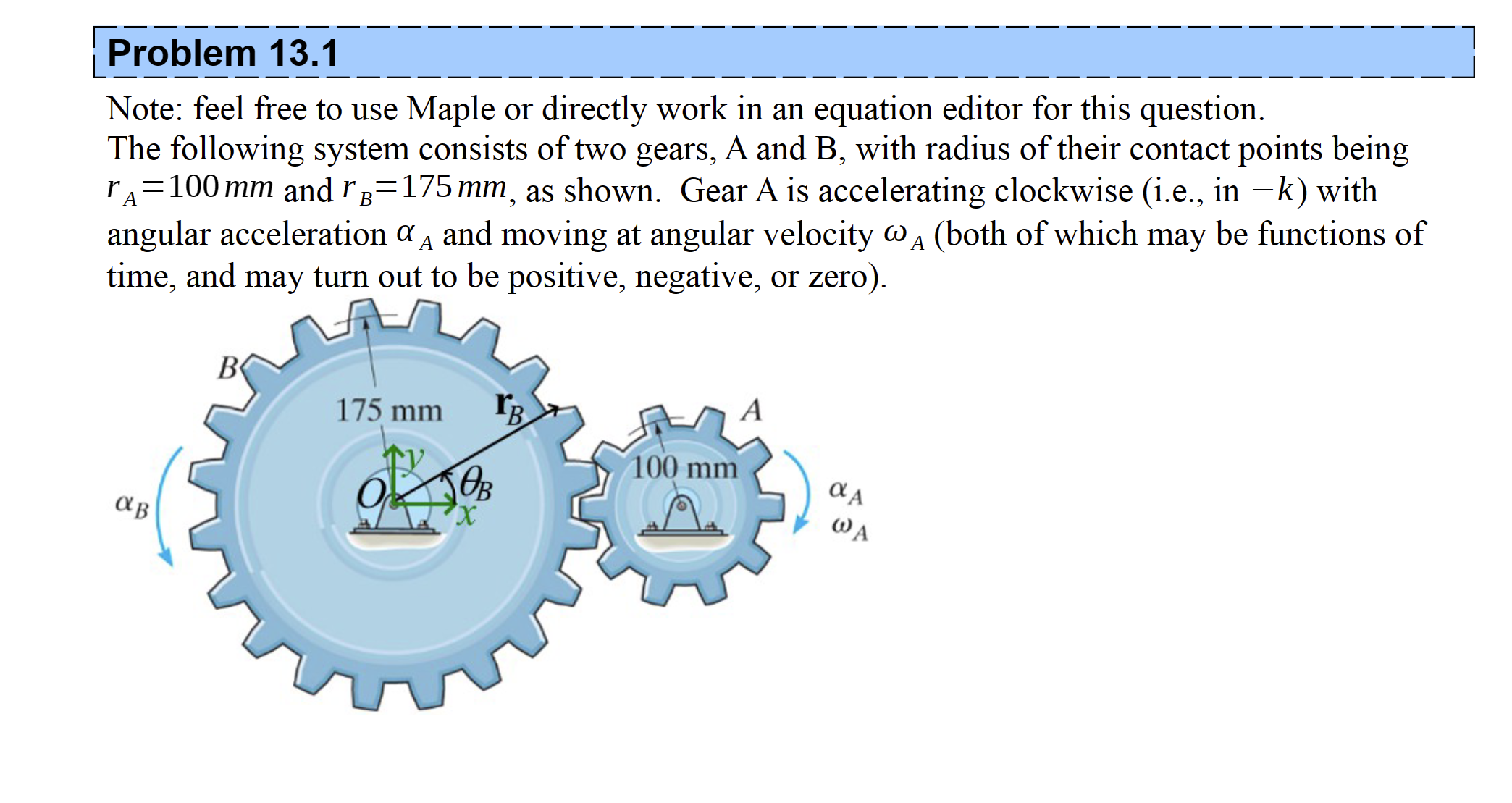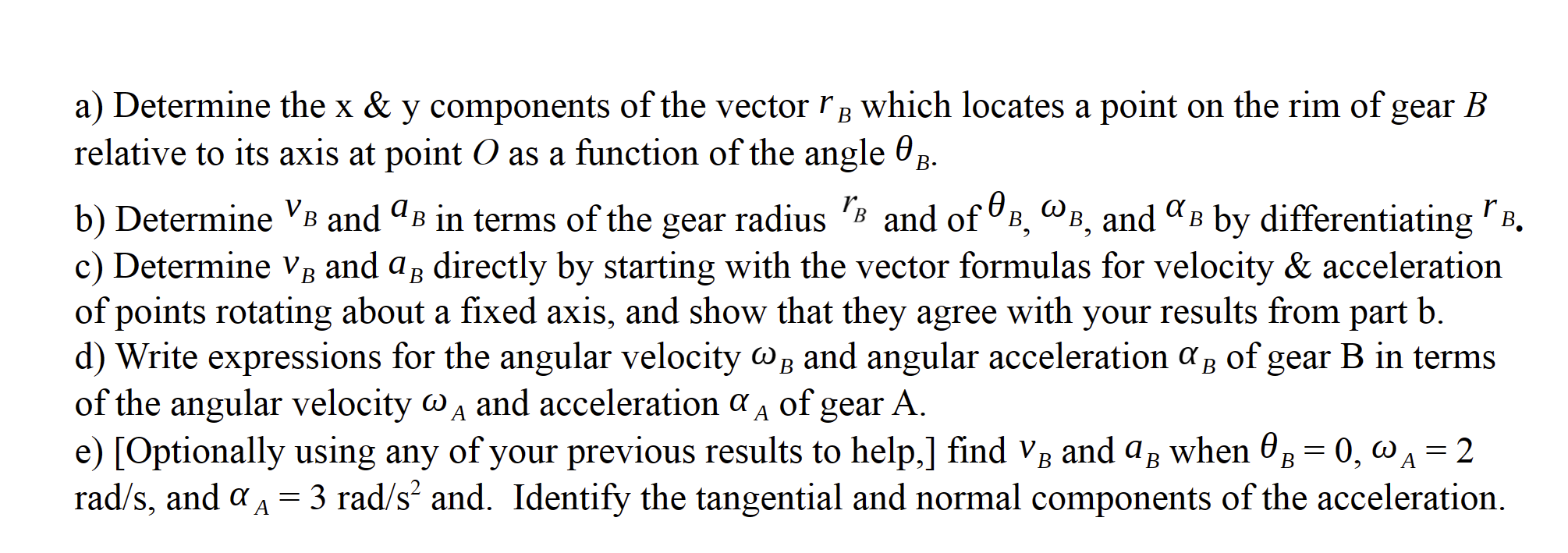Answered step by step
Verified Expert Solution
Question
1 Approved Answer
Problem 13.1 Note: feel free to use Maple or directly work in an equation editor for this question. A The following system consists of


Problem 13.1 Note: feel free to use Maple or directly work in an equation editor for this question. A The following system consists of two gears, A and B, with radius of their contact points being r=100 mm and B=175 mm, as shown. Gear A is accelerating clockwise (i.e., in -k) with angular acceleration A and moving at angular velocity @A (both of which may be functions of time, and may turn out to be positive, negative, or zero). 175 mm OKTOB X B 100 mm A WA a) Determine the x & y components of the vector B which locates a point on the rim of gear B relative to its axis at point O as a function of the angle 0 B. 0 r B b) Determine VB and B in terms of the gear radius Band of B, B, and by differentiating "B. B c) Determine VB and a directly by starting with the vector formulas for velocity & acceleration of points rotating about a fixed axis, and show that they agree with your results from part b. d) Write expressions for the angular velocity @ and angular acceleration of gear B in terms of the angular velocity @ and acceleration % of gear A. B A A e) [Optionally using any of your previous results to help,] find V and when B = 0, rad/s, and = 3 rad/s and. Identify the tangential and normal components of the acceleration. a A = 2 A
Step by Step Solution
There are 3 Steps involved in it
Step: 1

Get Instant Access to Expert-Tailored Solutions
See step-by-step solutions with expert insights and AI powered tools for academic success
Step: 2

Step: 3

Ace Your Homework with AI
Get the answers you need in no time with our AI-driven, step-by-step assistance
Get Started


